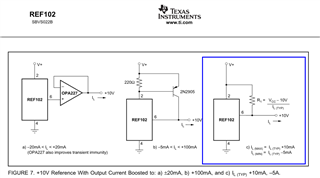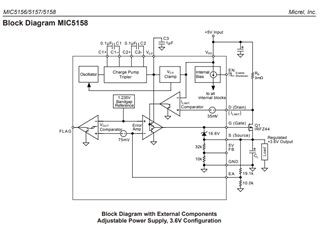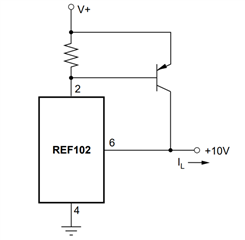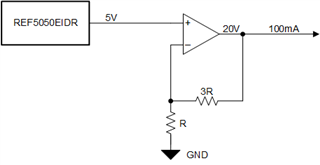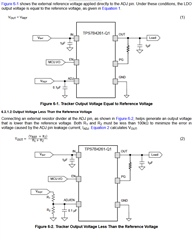Other Parts Discussed in Thread: REF50, REF50E, OPA2156, LM317, TPS7B7702, TPS7B85-Q1
Tool/software:
I am looking for a precision voltage source, 10V fixed output, 200mA current capability.
Is the REF102 a good choice for that application ? I am referring to the picture below taken from the part data sheet.
Can you help indicating the complete circuit to be added to REF102 in order to boost the current accordingly?
Or, suggest another circuit that can do the job.
Further, we need a circuit with 20V fixed output, 100mA current.
Thank you for the help.
